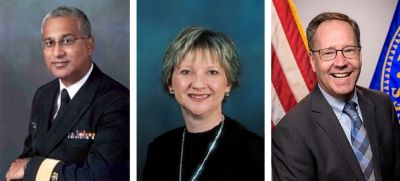| Program Category | 2001 | 2005 | 2008 |
|---|---|---|---|
| Health centers | ~770 | ~1,000 | ~1,080 |
| Sites | ~3,320 | ~3,750 | ~7,350 |
| Patients | 10.3 million | 14.1 million | 17.1 million |
| Funding | $1.2 billion | $1.7 billion | $2.1 billion |
The Health Center Growth Initiative
In 2001, President George W. Bush launched the Health Center Growth Initiative. The goal was to add or expand 1,200 health center sites over 5 years, providing services to an additional 6 million people.
By 2007, HRSA had issued 716 awards for new access points and 520 awards for expanded services at existing sites. The total number of patients increased by nearly 5.8 million between 2001 and 2007. Federal funding for the program almost doubled, from $1.2 billion in 2001 to just under $2 billion in 2007.
Organizational changes
Project officer centralization
HRSA had shifted grant-making decisions from the regions to headquarters in 1989. Policy making, data collection, and partnership activities also occurred at headquarters. However, hundreds of project officers were still in the regional offices, where they performed day-to-day oversight of the program. Because they lived near the health centers, they could travel to visit them quickly. They also had a sense of the local issues health centers were facing.
In July 2003, the new HRSA Administrator transferred project officer responsibilities for the Health Center Program from HRSA’s 10 regional offices to headquarters. Many staff had to be trained to perform new duties, and some health centers found the shift challenging. But in the end, the change was positive. It made the program more uniform and consistent across the country.
New building

In 2005, BPHC staff moved from a building in Bethesda, Maryland to join the rest of HRSA in the “Parklawn building” at 5600 Fishers Lane in Rockville, Maryland. There were about 150 employees working on the Health Center Program. There were also another 350 working on the National Hansen’s Disease Program and other initiatives that would later be moved out of BPHC.
Electronification
In the mid-2000s, BPHC shifted from a paper-based office to an electronic one. Before, the details about each health center’s grants were stored in three-ring binders. When something needed to be reviewed, like a health center’s request to change its scope of project, papers would be passed from person to person.
The Electronic Handbooks
HRSA launched its Electronic Handbooks (EHBs) in 2004. The EHBs started as a tool for health centers to submit grant applications electronically. But soon project officers were using the system to manage their oversight work. Over time HRSA has added many more modules. Today HRSA handles almost every aspect of its work with grantees in the EHBs.
The EHBs enabled more accountability in the bureau. The system also helped managers balance staff time and workload. It was easy to tell if work was being done on time and where more help was needed. Dashboards and reports provided the data and information needed to more effectively manage the program.
New leadership

Dr. Sam Shekar became BPHC’s new Associate Administrator in 2002. Like Dr. Gaston, he was a rear admiral in the Public Health Service Commissioned Corps. He also served as the Assistant Surgeon General. Dr. Shekar oversaw the centralization of project officer duties and the launch of the EHBs.
In 2005, Michelle Snyder became BPHC’s new Associate Administrator. She led the bureau’s response to Hurricane Katrina.
BPHC’s next director, Jim Macrae, first arrived at the bureau in 1992. He served in various roles, eventually becoming director of the Office of State and National Partnerships. In 2000 he left the Health Center Program. He led HRSA’s Office of Field Operations, and then HRSA’s Office of Performance Review. In the spring of 2006, he returned to BPHC as the bureau’s new Associate Administrator.
Macrae has pushed the bureau to always think ahead and always ask if there’s a better way to accomplish its goals.
Health center site visits
Primary Care Effectiveness Reviews
For a number of years, BPHC conducted Primary Care Effectiveness Reviews (PCERs). These happened every 3 to 5 years, usually when a grant period was about to expire. During PCER visits, a team reviewed the health center’s leadership, clinical and financial operations, and information systems.
HRSA performance reviews
In 2004, HRSA shifted the site visit process to the Office of Performance Review. The goal was to conduct on-site reviews for multiple HRSA programs simultaneously. Reviews took place in the second year for a new grantee or the third or fourth year for an existing grantee. They were usually conducted by HRSA staff from the regional offices.
Operational Site Visits
In 2010, BPHC took back responsibility for health center site visits. The project officer conducted a visit within 90-120 days of funds being awarded to a new grantee. For existing grantees, consultants conducted visits “as needed.” BPHC used these visits to assess compliance with program requirements. But the schedule was irregular. The bureau also did not have a way to track when site visits occurred and what their findings were.
Over time, the process became more standardized. Health centers (and look-alikes) now receive an operational site visit (OSV) at least once every three years, in the middle of their project (or designation) period. Records about the visit and any findings are entered in the EHBs.
James W. Hunt, Jr., former CEO of the Massachusetts League of Community Health Centers, describes OSVs as “a great opportunity for health centers to showcase their best practices, and also to be measured against standards that have been created for all health centers across the country.” He adds: “When a health center achieves 100% compliance in its OSV, there’s always a cheer from all their colleagues across the commonwealth.”
Changes in grant awards
HRSA’s process for awarding grants to health centers has changed through the years. This includes how competitive the application process is and how long awardees will receive funds before they must reapply.
Competitive grants
Grant-making was moved from the regional offices to the Bureau of Health Care Delivery and Assistance in 1989. At that time, most grants were for 3-year project periods. However, grantees had to apply again for each year’s funding using a scaled-down version of the application. Grants were supposed to be awarded competitively. But a General Accounting Office report in 1992 found the bureau was often just giving awards to existing grantees.
In response, the bureau argued that nurturing a new health center could take many years. In addition, most areas did not have more than one organization prepared to meet the program’s requirements.
Service Area Competition
Over time, the bureau moved away from non-competitive grants. In 2004, BPHC introduced the Service Area Competition (SAC). When a health center’s project period ends, it must compete against any other organizations that propose to serve the same area.
The SAC application acts as a safeguard for the program. It ensures that program funds are used effectively by funding the best organization to serve each area.
Training and technical assistance partners
BPHC works with national partners that focus on the needs of health centers and their patients. Many focus on the “special populations” defined in the Health Center Program statute: migratory and seasonal agricultural workers, people experiencing homelessness, and residents of public housing. They also focus on other underserved groups and high-need communities.
In 2006, HRSA introduced a new type of funding called National Cooperative Agreements (NCA). In 2019, National Training and Technical Assistance Partnership (NTTAP) funding replaced NCA funding.
NTTAPs use their subject expertise to develop and deliver training and technical assistance for potential and existing health centers. This includes learning collaboratives, webinars, articles, newsletters, toolkits, and fact sheets.
Health Center Patient Survey
In 2009, BPHC conducted the first survey of health center patients. The bureau conducted the Health Center Patient Survey (HCPS) again in 2014 and 2022.
The HCPS consists of in-person, one-on-one interviews with patients who are representative of the Health Center Program’s total patient population. It collects data on their demographics, health conditions, health behaviors, access to and use of health care services, and satisfaction with the care they received.
HCPS data inform HRSA’s policy, funding, and planning decisions. Health care researchers have also used the data to show the impact of health center services.
The American Recovery and Reinvestment Act
In 2008, the United States suffered its worst economic downturn since the Great Depression. In response, Congress passed the American Recovery and Reinvestment Act (ARRA). It was signed into law in February 2009.
ARRA funding for health centers
The total budget for the Health Center Program in 2009 was $2 billion.
ARRA provided an additional $2 billion for the program, spread over 2009 and 2010:
- $500 million to expand services
- $1.5 billion for capital development, including construction or renovation, equipment purchases, and health information technology
HRSA issued most of the service expansion funds at record speed. In March 2009, the agency released $155 million in New Access Point (NAP) funding to create 126 new health center sites. Awards went to those who had submitted highly rated but unfunded NAP applications in 2008. Later that same month, HRSA awarded nearly $338 million to all existing health centers to expand services. This also helped create many new jobs for providers and staff.
HRSA distributed the capital funding almost as quickly. Every grantee got a one-time capital award in June 2009, totaling $851 million. In December 2009, HRSA awarded nearly $509 million in competitive capital funds to 85 health centers. Finally, the agency provided about $125 million for health information technology.
Changes to the bureau
ARRA changed the bureau. The program became bigger and was expected to move faster and accomplish more than ever. In late 2008, BPHC had about 150 full-time employees working on the Health Center Program. By the end of 2012, the bureau had grown to about 300 full-time employees.
Capital funding
Another significant change was the funding for capital projects. The Health Center Program had not previously provided capital funding at that scale. Capital funding is different in many ways from funding for service delivery. There are requirements involving the National Historic Preservation Act and the National Environmental Policy Act. There are rules about what types of equipment or facilities may be covered. There are timelines for construction and design requirements. BPHC had to ramp up its in-house knowledge quickly.
The funding transformed health centers. They could afford much-needed expansions and build new facilities, allowing more people to get access to care, including new services. It also boosted the economy. One study estimated that every $1 million invested in health centers through ARRA led to $1.7 million in new economic activity.